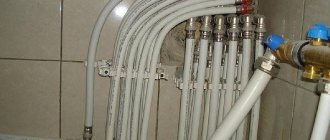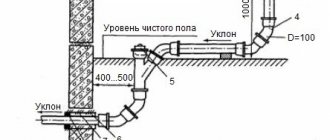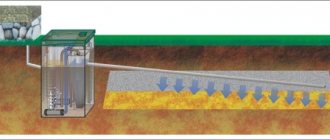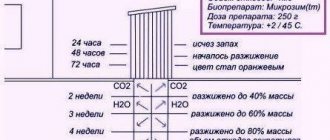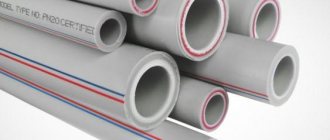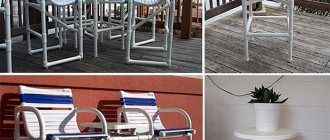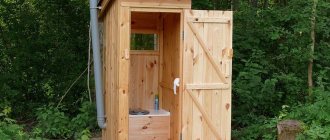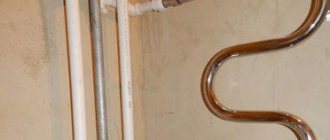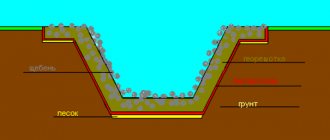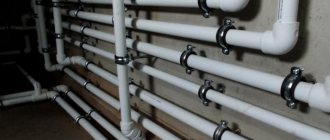In this article we will look at a diagram for installing water supply pipes in any private house with our own hands. It is quite difficult for a person without special training to understand the intricacies of arrangement, but we recommend that every home owner understand the basics. This will be useful for monitoring the work of installers, as well as for choosing the optimal supply option. Laying a pipeline is no less significant a task than organizing a network of pumping equipment. We will provide all the necessary information to make it easier to understand the specifics of the device and the rules, in addition, everything is based on regulatory requirements.
Types of water supply wiring in a private residential building according to the drawing
There are 2 main types of water supply, which is carried out in households:
- autonomous - everything comes from a personal well or a drilled well;
- centrally - supply from a special line that takes resources from a tower or a station designated for this.
Both methods have their positive and negative sides; you should decide on the subspecies before starting installation, because each of them has its own characteristics. The final cost of the entire process also depends on the choice. Although there are situations when only one of the methods is possible (for example, in the absence of a centralized water supply system) and then there is no choice.
Scheme of input and connection of water supply (water) of a residential private house from the central water supply
When choosing a system, you should think about several criteria:
- is there a water main in the area? It’s funny, but people sometimes forget to take this into account;
- what quality of moisture is supplied - it happens that it is only technical, it is not recommended to drink;
- how reliably and uninterruptedly does the supply function? In some regions there is pressure only by the hour or on days of the week;
- does it depend on external factors - some lines stop working in winter;
- how expensive it is - sometimes it is much cheaper to drill your own well than to crash into a working highway.
How to distribute water around the house if there is an autonomous water supply
When an owner wants to equip his personal well, he should prepare for large labor and financial costs even at the construction stage. First you will have to dig a well or drill it, draw up the correct technical plan, select and buy equipment. Only then will you need to mount and connect.
If you do not focus on the price of this choice, then it has many advantages:
- you don’t have to depend on any external factors;
- can be carried out everywhere, it is especially convenient where there is no common highway;
- no need to pay monthly;
- The quality of moisture is usually much higher, in addition, you can install any filters if necessary.
If it turns out that the source is not clean enough and drinking from it is not recommended, then special treatment facilities can be installed. This will greatly clean and improve the condition of the liquid, making it suitable for cooking and drinking. Choose such a device on our website, and if you have any questions, the managers will be happy to answer them.
Video description
Key points on required documents and permits, as well as how preliminary preparation is carried out - in the video
The advantages of a centralized water supply system include the following factors:
- Automatic maintenance of the required pressure in the system;
- The water initially undergoes purification - demineralization, removal of various impurities and mechanical particles, disinfection;
- Low cost of connection and all installation work.
The disadvantages of this option include:
- Dependence on external factors;
- The need to obtain permits;
- Monthly fee;
- System pressure can vary greatly;
- The quality of water often leaves much to be desired due to the high concentration of chlorine and other chemical elements.
Autonomous water supply: pros and cons
Organizing an autonomous water supply for a private home requires large financial and labor costs during the construction phase. This is explained by the need to dig a well, or drill a well, draw up a plan correctly, and then select and purchase all the necessary equipment. Next, everything needs to be mounted and connected.
Despite the high costs of organizing an autonomous water supply for a private home, this method has a number of advantages:
- Independence from external conditions;
- The ability to provide water supply in places where there is no water main;
- There is no need to pay monthly for water supply services;
- The quality of water, as a rule, is much higher, plus the ability to independently install the necessary filters, depending on specific conditions.
Autonomous water supply is more complex than the main one Source comunications.ru
See also: Catalog of companies that specialize in water supply and sewerage
As a result. Based on the above, it is impossible to definitively answer which water supply system for a private home is better. The first option (centralized) has lower initial costs and a relatively simple installation procedure. But the second method is independence and the absence of monthly payments, better water quality and reliability of the entire system, provided that the water supply scheme for a private house is drawn up correctly, the selection of equipment and its installation are carried out in accordance with all technological norms and standards.
Photo of the installation diagram for a water supply system, which is usually used in a private country house
There are 2 ways in which the connection can be made - in series, one after the other, and in parallel, when everyone is turned on at the same time. What to do at home depends on how many people live, whether they are there permanently or periodically, and how intensively the water supply is used.
In some cases, a mixed type is used, when all mixers are connected through a manifold-combiner, and all other elements must be connected in series.
If the connection is serial
It looks like alternately supplying pipes that lead from the riser or water heating device to the plumbing and taps. First, general ones are diverted, and then branches go from them through tees to the places where moisture will be consumed.
This is a more economical method; it is often used in apartments and small houses. The essence of saving is in a small amount of materials, and the installation itself is simplified. The system will be compact, it will be easier to hide it under the decoration.
A serious drawback is that if several people use hot liquid at the same time, then at the most distant point the pressure will be significantly lower than at others.
Another disadvantage is that if you need to repair or connect any of the plumbing fixtures, you will need to disconnect the entire housing from the supply.
This is why we recommend using a different scheme in private homes with high consumption to avoid problems with operation.
If the connection occurs in parallel
This option is based on the fact that the pipes themselves go from the main collector to the points where water intake will occur. Separate nodes are placed for each line.
It will be necessary to lay a lot more pipe lines, which means that it will be difficult to camouflage them. And any part with a tap or appliance will have a stable, unchanging pressure, even if several plumbing fixtures and taps are used at the same time. Changes in pressure will be minimal, the pressure will be even.
A collector is a device that has one input and two or more outputs. Their number will depend on how many nodes and equipment the source uses.
MBFT-75 Membrane for 75GPD
SF-mix Clack up to 0.8 m3/h
SF-mix Runxin up to 0.8 m3/h
For cold water supply this is done before entering the premises, and for hot water supply - immediately after the water heating product. A cleaning filter and a reducer are installed in front of the collector, which will control the pressure.
Scheme
The installation of water supply pipes in a house can be done in two fundamentally different ways:
| Image | Description |
| The tee or sequential circuit is familiar to each of us from Soviet-style apartments. Plumbing fixtures are connected to a common water supply through tees (threaded or welded). The throughput capacity of the supply system when using several water points at the same time is divided between them. The water supply can be laid openly or hidden (in grooves or screed). |
| The collector or radial scheme involves connecting each plumbing fixture to a common comb collector with its own supply. The lines are laid, as a rule, hidden - in a screed, grooves or behind a false wall made of gypsum plasterboard, wall panels, etc. |
The video in this article will help you learn more about what kind of water supply pipes a country house can use and how to install them correctly.
Let's weigh the advantages and disadvantages of each type of wiring.
Tee
Pros:
- A sequential layout of water supply pipes in a private house is more economical than a radial one due to the much smaller footage of the water supply. The more plumbing fixtures are connected to the water supply, the greater the difference in the total length of water supply systems;
With a tee circuit, the total length of the water supply system is minimal
- With open installation, the tee circuit is easier to maintain: all connections are accessible for opening and repair;
However: proper installation of a manifold circuit involves hidden installation of solid pipes or pipelines with maintenance-free connections. Leaks in solid sections without joints (unless we are talking about electric-welded VGP pipes) are an extremely rare event.
Solid pipes or maintenance-free connections are laid in grooves
- You can always connect an additional water supply point with your own hands to the existing water supply - a washing machine or dishwasher, washbasin or shower. In the case of collector wiring, this is much more problematic: a dedicated supply line will have to be laid hidden from the collector cabinet, which implies a large amount of dusty and so-called wet (using mortar) work.
In the photo - an insert into an open tee water distribution
Minus:
- Pressure drop on distant devices during water collection at points close to the water supply input.
Counterargument: this drop can be minimized by selecting the diameters of the liner in different sections of the water supply. We will talk about it in the next section of the article.
Radial
Pros:
- The radial design of the water supply pipes of a private house completely eliminates the pressure drop on one plumbing fixture when drawing water on another. Of course, with minimal responsibility of the installers - if the cross-section of the water supply in the section up to the collector is not underestimated relative to the connections;
Radial distribution: the pressure on one plumbing fixture does not depend on the water supply on others
- All devices can be switched off from one point - the manifold cabinet;
A moment of sarcasm: in real life, this feature is useful only to the owner of a mini-hotel. From the manifold cabinet you can turn off the water in locked rooms in the event of an emergency, without waiting for the residents to return. In a private house, it is much more convenient to turn off any water supply point with valves located directly in front of it.
Shut-off valves are conveniently located on the inlet to the mixer
Minuses:
- Material consumption;
- Possibility of hidden installation of connections from the collector to the devices only at the stage of major overhaul. For comparison, sequentially separated pipes for water supply to a house can be installed after finishing the finishing work;
- Unjustified complexity of the water supply scheme as a whole. Without labeling the faucets in your manifold cabinet, it will be difficult for your family members to understand the purpose of each one.
Finding the right faucet without a signature on it is a non-trivial task
If the water supply is external, where is the housing supplied from?
There are several schemes for distributing water in every private house without do-it-yourselfers, let's look at them in more detail.
Central water supply
The most budget-friendly way to organize water indoors. To cut in, you need to get permission from the settlement administration, then install meters, install equipment, and lay a pipeline to your home. Another condition is the installation of a septic tank or other wastewater treatment facility.
Well
One of the most common mining methods in suburban areas and in the country. Typically used where the liquid is shallow. The main advantage is that even if there is no light or pump, you can still fill a bucket, even with a lot of effort.
Well
The purest liquid of all the options proposed above. There is more of it, you can simultaneously provide several areas at once. But creation requires significant investment, and a license for use will also be required.
Connecting the pumping station
The pump or pumping station is installed in a caisson above the well, in the basement or in an outbuilding next to the well. This equipment is sensitive to severe frosts, so it should be located in an insulated, or even better, heated place.
Otherwise, there is a risk that the water inside it and nearby pipes will simply freeze. It is also possible to install a submersible pump directly into the well.
However, pressure switches and other automation will still require some kind of insulated space in the borehole head or room in the house for them to work correctly.
Schematic diagram of pumping station connection
Types of wells
There are only 2 main subspecies. In the first case, you can drill an artesian, which has a depth of up to 150 meters, or a regular one, “into the sand.” The second one does not go deeper than 15-50 meters.
They also differ in the time they can be used. The former last up to 50 years, and the latter usually no more than 20 years.
Organization of water supply to the house
An ordinary well can also be used as a source of water in the permanent water supply system of a private home.
Therefore, if the old-fashioned method of lifting water from a well - in buckets, with its delivery to the house on a rocker - does not suit the owner of the household, and the water supply is used in the winter, then there is no need to rush into filling the well shaft. The reason is that you will need access to insert a water pipe into the well in its deepened part.
The supply of water from the well to the house is carried out according to the following algorithm.
Stage No. 1 – preparation of tools and materials
At the initial stage, it is necessary to decide on the method of automatically transporting water to the house, outbuildings or for irrigation, as well as which pump will be used for this - submersible or surface.
Depending on the choice of water supply method, it is recommended to put on paper a water supply plan, in which all the main equipment and materials used are detailed. The presented diagram will help you draw up a plan for installing a water supply system using a pumping station
The pump power is selected so that the water pressure in any section of the pipeline is within 1.5 atmospheres, and the performance exceeds the maximum water flow by 25%. In addition, the operation of the pump must be linked to the debit of the source, to prevent air from entering the unit after all the water from the well has been exhausted.
If the water level in the well does not exceed 7 - 10 m, then the optimal solution would be to equip a pumping station with a surface pump.
A mandatory element in the water supply scheme from a well is a hydraulic accumulator. This is a storage tank that also allows you to create the required pressure in the network
When choosing pipes, you should take into account that the modern method of laying water pipes involves the use of pipe products made of metal-plastic. The most popular are pipes with a diameter of 32 mm.
And, of course, you need to calculate and purchase the necessary set of fittings:
- fitting;
- tees;
- bends;
- adapters.
Compression fittings simplify the process of working with pipes. Their use does not require additional and expensive welding equipment.
Stage No. 2 - arrangement of a trench for pipes
The practical part of arranging the transportation of water to the house begins with digging a trench for laying water pipes.
When choosing the depth of laying communications, the following factors are taken into account:
- the need to install a cushion of sand and gravel mixture at least 10 cm thick at the bottom of the trench;
- depth of soil freezing.
The degree of soil freezing in a particular area can be determined by specialists from the nearest construction organization.
For example, for the central part of Russia this figure ranges from 1.35 m to 2 m. This error is determined not only by the climatic conditions of the regions, but also by the type of soil
It is recommended to dig a trench to a depth of 30-50 cm below the freezing layer and with a slight slope from the well, about 10 cm per 1 meter of pipe length.
Stage No. 3 – connection to a water supply source
An important stage is the work on arranging the passage of the pipe through the wall of the well.
The mandatory conditions that must be met in this case are:
- The hole for the pipe entry is equipped at the same level at which the water supply lines will be laid.
- The input node should not be placed at the junction of the rings.
A hole is drilled in the concrete ring, usually for an inch cut.
An HDPE pipe is connected to the outlet from the outside of the well through a fitting. A fitting is installed on the inside of the drain to connect a vertical intake pipe to it. In our version with a pumping station or pipe to which a submersible pump is mounted
It is also recommended to implement the option of connecting a tee to the internal fitting, on which, in addition to the vertical intake pipe, you can install a drain valve on the horizontal outlet. This will be useful in the case when the house is not used for living in the winter, and the water from the system needs to be drained.
The hole in the concrete ring of the well, into which the through passage is installed, is carefully sealed with a special waterproofing mastic, which contains reinforcing fibers.
Wide rubber gaskets are placed on the same composition, applied to the internal and external walls of the well, on both sides, after which the drive is clamped with nuts and washers.
Stage No. 4 - installation of the pipeline
Having completed the excavation work and equipped the entrance to the well, you can backfill and compact the remaining gap between the walls of the shaft and the outer walls of the well. Waterproof it and proceed directly to the installation of the water supply system.
Work begins with preparing the intake pipe section. To calculate its length, the fact that water must be drawn from the middle part of the water level in the well is taken into account.
To ensure that there is always water in the pipeline, eliminating the creation of air pockets, the intake pipe is equipped with a check valve
And in order to prevent large suspensions from penetrating into the pipes and pumping station, it would not be superfluous to install a filter on the intake pipe. Ready-made corrugated water intake pipes are available for sale, already equipped with a check valve.
Having equipped the inside of the well, you can begin laying water pipes in the prepared trench - from the well to the house. Here it should be taken into account that a prudent owner will not skimp on additional materials, the use of which will be able to protect against more costly troubles in the future.
Therefore, it is recommended not to simply fill the pipeline with earth, but to carry out some safety measures:
- mechanical protection of pipes;
- pipeline insulation;
- redundancy of communications.
To protect the pipe from soil pressure and other influences, you can use inexpensive technological polyethylene or corrugated pipes.
Both regular corrugated pipes and pipes with insulation are available for sale, which allows you to comprehensively solve the issue of protection and insulation.
Even if the water pipes are laid below the ground freezing line, as insurance against abnormal surprises of nature, it would not be a bad idea to hide them under any insulation, for example, from polystyrene foam boards, the cost of which is not so high
Considering the relatively low cost of plastic pipes, in order to avoid having to carry out labor-intensive work of opening the entire trench, looking for a faulty area and repairing the main, it is recommended to lay a backup water pipe next to the main one.
Stage No. 5 – final work
The final stage of supplying water supply to a house from a well is the installation of a pumping station. It allows you to economically use the resource of such expensive equipment as a pump. Having used maximum power when pumping water into the accumulator, the pump begins to operate in economical mode, squeezing the required amount of liquid into the system.
For the pumping station, it is necessary to equip a closed utility room in which, even in frosty weather, the temperature will not drop below 5 degrees Celsius.
A check valve is installed at the inlet of the pump to protect the house from flooding from the main pipeline in the event of system malfunctions.
To monitor the pressure of the water supply and automatically, if necessary, turn it off and on, the pump is equipped with an electric contact pressure gauge.
The hydraulic accumulator is installed no lower than 1.5-2 m from the floor level, preferably in the attic, in order to ensure a gravity supply of water during a power outage.
Considering the expensive equipment used, it is advisable to entrust the installation and connection of the pumping station, without special skills, to professionals.
Which pump to choose
In order for water to flow from the tap, you need to install pumping equipment that will cope with the task.
The main thing is to take into account several parameters:
- how much liquid will be consumed;
- where is the highest point of consumption;
- what performance is needed;
- how deep is the well;
- average pressure (will be written in the passport).
We recommend using a voltage stabilizer when connecting such equipment.
Pipe selection
Modern plastic pipes are predominantly used due to their reliability, lightness and ease of installation. Metal-plastic and metal have almost gone out of use due to their high cost and less practicality.
Laying out water supply pipes in the house
Installation of metal-plastic requires bending and crimping equipment and serious practical experience. When installing metal pipes, welding is required.
Using plastic pipes with minimal crimping equipment, anyone can create a water supply system with their own hands.
If the house also plans to have hot water supply, pipes with thermal protection are needed.
Reinforced with fiberglass or aluminum, polypropylene pipes will do the job perfectly.
What else is plastic useful for? After welding (a machine for welding polypropylene pipes can be purchased or rented) and pressure testing, plastic connections do not need to be checked or corrected. Pipes can be hidden in the decoration. Do not forget about temperature fluctuations and create S-shaped bends in dangerous places to avoid pipe bursts.
Internal copper pipe routing
But if the high price does not scare you and you are willing to pay for professional installation, choose copper pipes.
Diameter and capacity of water pipe
- 25 mm 30 liters/min.
- 32 mm 50 liters/min.
- 38 mm 75 liters/min.
Scheme for introducing a water supply system into any private house, where to start drawing up a water supply project
All installation activities should begin with the project. Already at this moment it is worth thinking about what type will be built, how often it will be used and approximately how many drainage points will be required. This is important because the parameters will determine what system and equipment needs to be supplied.
Options:
- submersible pump with automation;
- pumping station;
- hydraulic accumulators.
What to consider when designing a connection diagram and introducing cold water in a private house (with photo)
Equally important are the ways in which the liquid will be filtered. The easiest way is to find out the quality and install the appropriate filter or the whole system.
You should also think in advance about how the hot pressure will be supplied and at what depth the products should be laid - each region has its own options.
Water supply systems
Water supply to country houses is:
- centralized;
- decentralized.
In the first option, the water source is the water supply network common to the entire village. To connect a private home to it, you must contact the resource supply organization and obtain specifications for connection. The subsequent insertion into the centralized pipeline will be carried out by the installers of this company, and the distribution of the water supply through the residential building can be done independently.
Home water supply options
In the second option, water enters the house from a well, borehole or river. If such water intake is done on your own property, then you will not need to obtain permits or coordinate anything with government agencies. However, all issues of quality and compliance of the life-giving moisture entering the cottage fall on the shoulders of the home owner.
The nuances with which DHW is supplied
Typically, electric or gas boilers, water heaters or boilers are purchased for this purpose. The equipment can operate on solid, liquid fuel or gas. Each option has its own advantages and disadvantages; it is worth focusing on what is most often chosen in the region.
How does a typical plumbing system work?
Any system supplying water to a house consists of two equal parts: external and internal. The outdoor area connects the water source to the house. Depending on where the water is supplied from, the system configuration may vary.
The simplest option is a structure connecting the house to a centralized network. In this case, it will be a regular pipeline.
If a well is chosen as a source of water supply, in addition to pipes, the external water supply will include water-lifting equipment: a surface or submersible pump - the type of device depends on the well.
In addition, this also includes an automatic control system for pumping equipment, filters for coarse and fine cleaning, as well as water distribution devices, which include water tanks, shut-off valves, etc.
To ensure the required pressure in the water supply, a storage tank can be used, which is placed at the highest point of the building or on an overpass near it
In a water supply system connected to a centralized main, the pressure is determined by its characteristics. For an autonomous system, it is necessary to install a pumping station or install a water tank.
The first option is preferable, since in the second case you will have to build an overpass about 3-4 meters high and install a metal or plastic tank on it.
If only seasonal residence in the house is intended, then the external water supply can be laid openly, that is, directly on the ground. If the system will be used year-round, then the pipes are laid in trenches buried below the freezing level of the soil.
If for some reason the pipeline is laid above this level, the structure will need to be properly insulated.
The internal part of the water supply system consists of several elements. Their number may vary depending on actual conditions.
A typical scheme necessarily includes the following:
- pipes of various diameters;
- water metering units, if the system is connected to a centralized main;
- devices for heating water, if necessary;
- control and shut-off valves;
- faucets and other plumbing equipment;
- distribution network.
To properly arrange the water supply system, it is necessary to develop a diagram that will accurately indicate the location of the pipeline. Both external and internal.
Such a scheme is necessary to determine the optimal installation option and to accurately determine the amount of material required for its implementation.
The outer section of the water pipeline is laid in a trench, the depth of which should be greater than the freezing level of the soil in the coldest season
Different fluid supply principles
You can install cold and hot water supply using one of 2 methods, which we will discuss below.
AMETHYST - 02 M Residential building for up to 10 people or up to 2 cubic meters/day.
Aeration unit AS-1054 VO-90
Main table dispenser AquaPro 919H/RO (hot and cold water)
"Blind" wiring
A dead end is installed at the last water intake mark - the liquid does not flow further. This is economical in terms of finances and space. At the extreme node, water will appear with a delay, and will flow into the tap only after it touches the plug.
Circulating closed system
The moisture here moves in circles all the time at the same temperature. The user will receive it immediately. This is best used for hot water supply to avoid serious temperature changes. Combined techniques can be used.
Main sources of water supply
Well
Pumping station that pumps water from a well
The well is one of the main sources of water, used since ancient times. Using centrifugal pumps, water is supplied to the surface. It is also possible to supply hot and cold water using submersible vibration pumps. The depth of the well is established on the basis of geological exploration data of the area at the stage of designing the house's communications.
It is better to design the installation of the well with the help of professional specialists. In this case, it is possible to avoid the risks of incorrect installation of rings and subsidence.
Well
A well is the most convenient and frequently used option for implementing water supply communications with your own hands. Only specialists in this field who have experience and all the necessary material and technical means should drill a well.
Depending on the location, artesian and filter wells are distinguished. The first are deep wells with the purest water. Filter wells are “shallow” wells.
Central water supply
Installing the system by connecting it to the central water supply is the most convenient and practical option in all respects. The only thing that will need to be done is to obtain permission from the authorities for the tie-in.
But it must be recognized that for the use of such water “on a general basis” it will be necessary to pay regularly. In addition, many are not satisfied with the central water supply of a private home because such water almost always contains some amount of bleach. But you can always install an additional special system for water purification.
What kind of pipes can be used to lead through the premises?
Another popular question is what material the line is made of. It all depends on several factors:
- what type of wiring is used;
- will DHW be required?
- budget;
- type of installation - hidden or open.
Polypropylene
Usually used with a tee system. Cross section – 20-25 mm. A larger diameter is preferable if there are 3 or more nodes. 25 mm can pass up to 30 liters per minute.
Peculiarities:
- are not afraid of corrosion;
- inexpensive;
- cut with any tool;
- lungs;
- tolerate defrosting up to 4 times;
- do not bend;
- It is necessary to have the skill of soldering sections.
Metal-plastic
Another very popular option. Usually used if the wiring is collector. Section – 16 mm. When choosing, pay attention to the thickness of the aluminum layer; it should be in the range from 0.3 to 0.55 mm.
Main table dispenser AquaPro 929CH/RO (cooling/heating)
Floor dispenser AquaPro 311 (empty, without cooling)
Floor-standing dispenser AquaPro 6207CH (cooling/heating/room temp.)
Nuances:
- durable;
- are not afraid of corrosion;
- used up to 100 years;
- can bend;
- more expensive than polypropylene;
- uneven;
- if installed incorrectly, there will be leaks;
- do not tolerate defrosting.
Cross-linked polyethylene
Usually they are placed on a warm floor, but sometimes this acts as an alternative to metal-plastic.
Peculiarities:
- flexible;
- lungs;
- do not react to corrosion;
- wear-resistant;
- withstand changes in pressure and temperature;
- easy to install;
- expensive;
- not suitable for open types of wiring.
Metal or steel
Previously they were made from them, then they switched to PP or metal-plastic. They should not be used for plumbing because:
- suffer from corrosion;
- difficult to transport and install;
- more expensive than plastic;
- connection requires a welder and equipment;
- growths gradually appear inside;
- high thermal conductivity.
Copper
Usually they are not installed in houses. It is not afraid of corrosion, but it is very expensive and difficult to install; special equipment will be required for welding. High thermal conductivity - hot things cool down quickly, and cold things heat up.
Stainless steel corrugation
This is also not a cheap option. For example, you can pay three times less for PP. But it is used because the quality is high and the service life is quite long.
Nuances:
- keeps its shape;
- bends;
- not afraid of corrosion;
- no welding machine required.
Ready-made systems for plumbing
Some manufacturers offer pipe kits that can then be used for manifold wiring.
The advantages of this choice:
- quality and reliability;
- energy efficiency;
- simplicity and speed of installation.
External (external) water supply
There are three options, depending on the source of water intake.
- If the country water supply is connected to the central one. Why is the connection point determined, and then the pipework goes underground to the house. The main requirement for this scheme is the straightness of the pipe laying in order to reduce the cost of purchasing it, the second is the insulation of the wiring by laying the pipes in insulating cylinders made of foam-type polymer materials. Although you can use any other insulation.
- Well. The simplest option for organizing water supply for a private home. A well up to 10 m deep is dug by hand, its trunk is formed, into which the pump is lowered. And a pipe is stretched from it to the house, this is done in exactly the same way as in the case of connecting to the central village water supply.
- Well. Everything is the same as with the well. However, it should be noted that water from a well is a liquid of high quality and purity, and in the required volumes. One well can even provide water to several private houses.
Water supply from a well or borehole
Attention! The central water supply does not always provide homes with water at the required pressure. But it will always operate, even if there is a power outage in the village. Unfortunately, the pumps immediately turn off. True, this problem can be solved by installing a storage tank or hydraulic accumulator in the water supply pipes of a private house.
There are several interesting points regarding the ability to avoid high costs by installing an external plumbing system. Firstly, both a well and a well can be built inside the house. This will have to be done before construction of the building begins. Thus, the external water supply becomes an internal one. This means that there is an opportunity to save a lot on laying pipes along the street.
The second concerns the well. You can install a caisson on top of its barrel, which will accommodate a pump, a hydraulic accumulator, an automation unit, some filter elements, and several gate valves. That is, the external part of the water supply network may be difficult in terms of increasing the equipment installed in it.
Well caisson
Features of water supply from a well
A conventional well uses unconfined aquifers that “rest” on the first impermeable layer. It is believed that the optimal depth of a mine well lies within 6-10 m. Anything higher is rain or melt water that has not had time to undergo natural filtration, and the well itself is protected from its penetration. Therefore, to some extent, constructing a well is more complicated than a well, because the latter has a metal pipe that serves as a reliable barrier against “dirty” groundwater. If the well is deeper than 10 m, then it is more economically feasible to equip the well with “sand”.
Methods of water extraction depending on the occurrence of aquifers Source giropark.ru
Another feature that complicates the maintenance of a home’s water supply system from a well is the effect on the operation of the pump of solid particles present in suspension in the water.
If at a well the first stage of water purification begins at the level of the galloon mesh on the perforated part of the pipe, then the submersible pump for the well “works” with untreated water. The mechanical cleaning filter is part of its design and must be cleaned periodically.
And the main feature is the low flow rate (productivity) of most wells. It does not exceed 1 m3/hour, usually much less, and depends not only on the characteristics of the site, but also on weather factors in each year. That is, this value is not stable, as in a well “for lime”, and in dry years the water level may drop by one or two “rings”.
